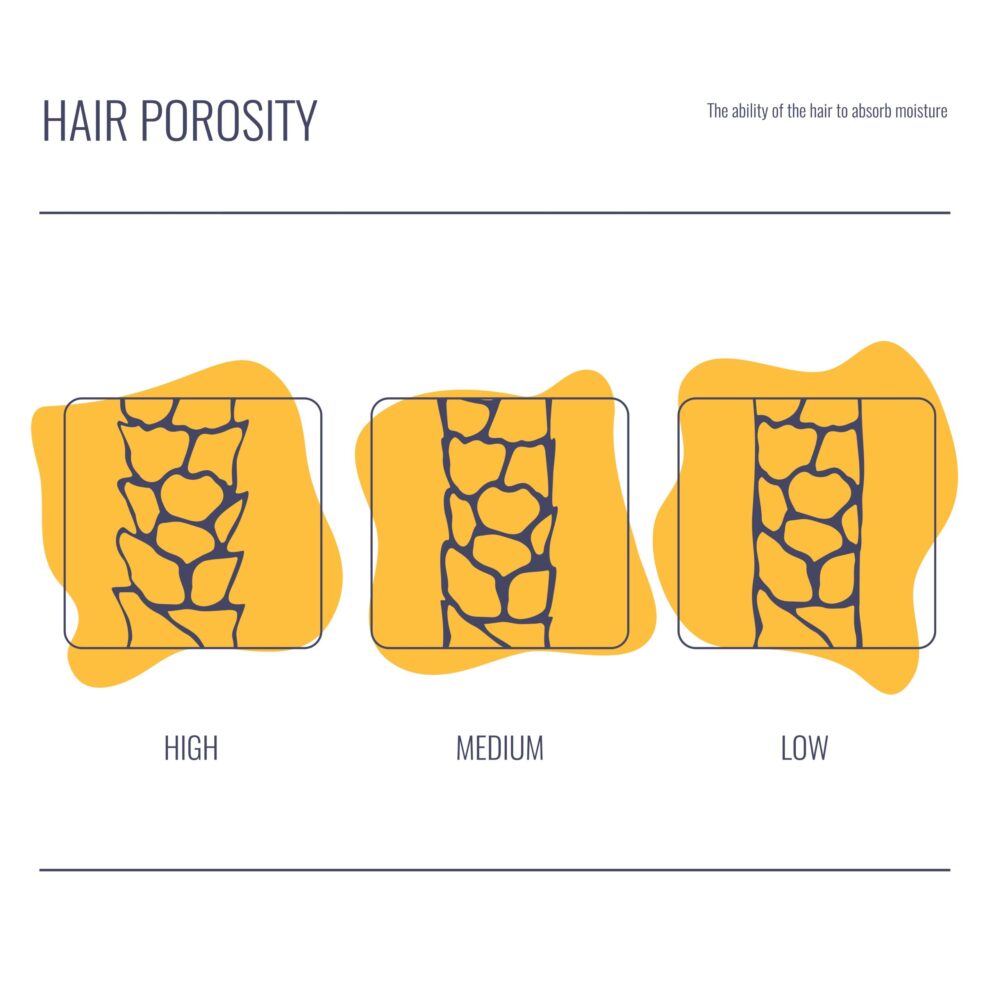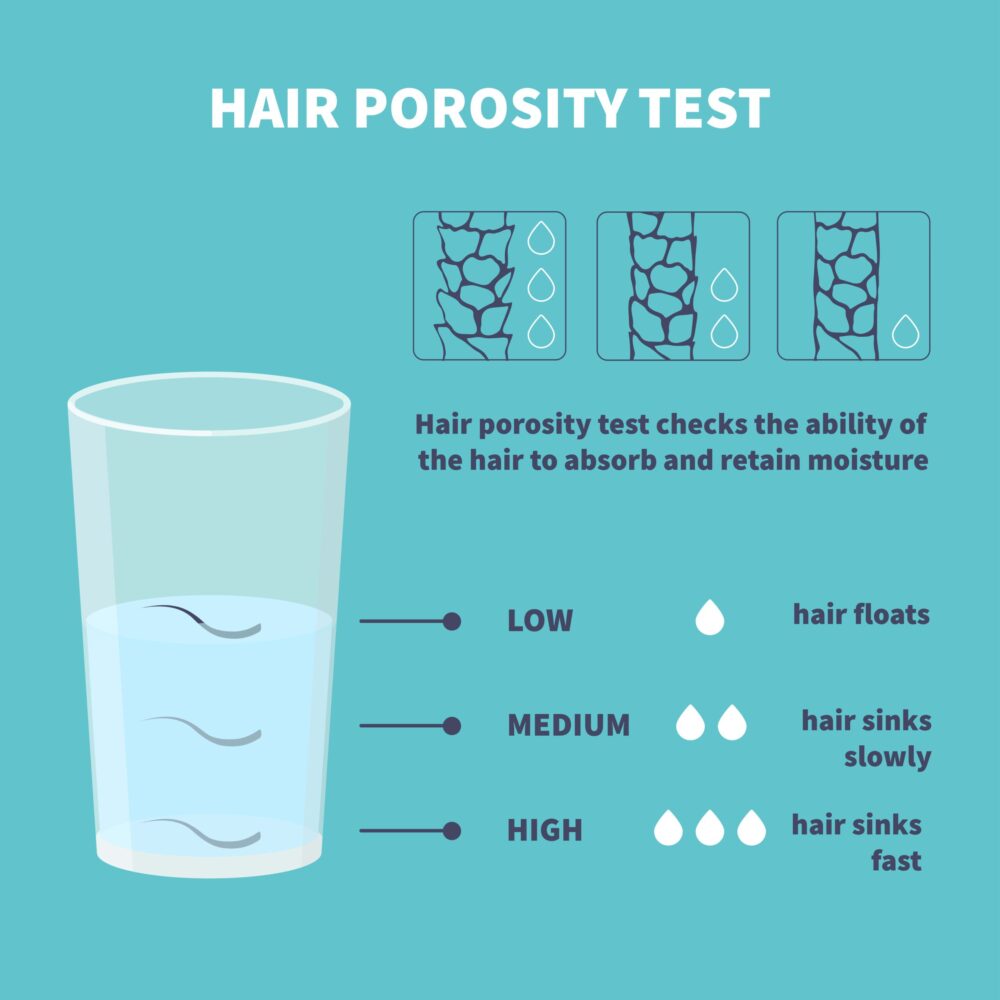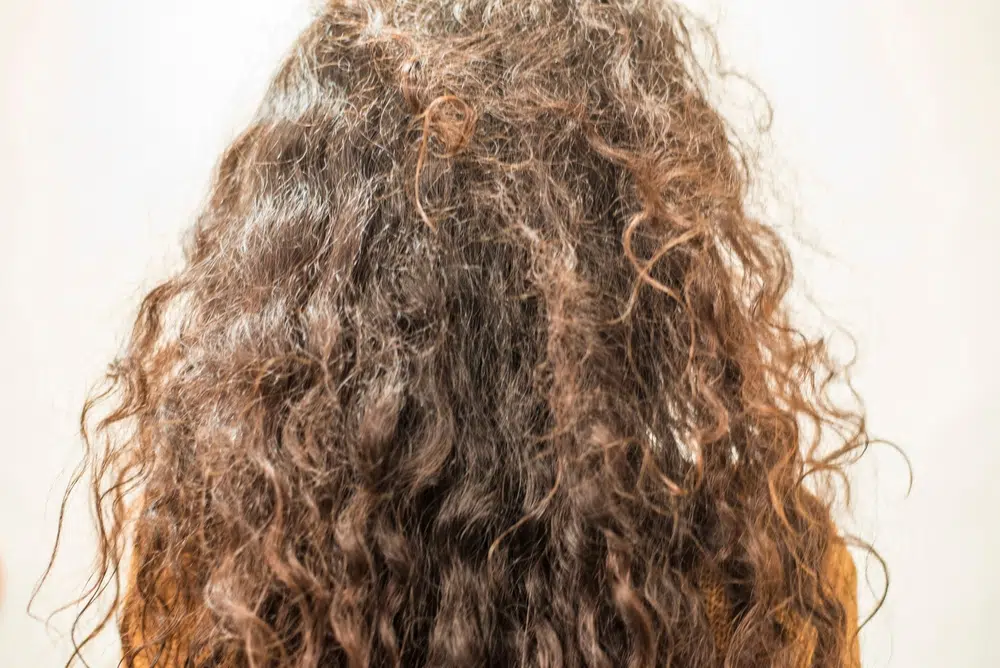Dealing with hair that feels constantly dry and prone to frizz? High porosity hair, characterized by a more open cuticle layer, presents its own set of unique challenges. It might feel like a constant thirst, but with the right understanding and care, you can achieve moisturized, smooth, and manageable hair.
At Dr. Serkan Aygin’s Clinic, we recognize that understanding your hair’s structure is the first step towards effective care. Let’s explore the strategies to help your high porosity hair thrive!
What is Hair Porosity?
Porosity is the measure of how easily your hair absorbs and retains moisture. This ability largely depends on the hair’s outermost layer, the cuticle. It’s composed of overlapping scales that can be tightly packed (low porosity), moderately open (normal porosity), or significantly open (high porosity).
What Does High Porosity Mean for My Hair?
With high porosity hair, you’ll likely notice that water and products are absorbed very quickly. While this might seem like a good thing, the open cuticle structure also means that moisture escapes just as easily. This can lead to hair that feels dry, brittle, and prone to frizz, even after applying moisturizing products.
On the flip side, high porosity hair is often very responsive to products, readily soaking them up. The challenge lies in ensuring that moisture stays within the hair shaft for longer.
How to Know Your Porosity Level
Determining your hair’s porosity level is crucial for effective care. Here are some simple methods to get an idea:
- The Water Glass Test: Drop a clean strand of your hair into a glass of room temperature water.
- If it sinks quickly to the bottom, your hair is likely high porosity.
- If it sinks slowly, you probably have normal porosity.
- If it floats on top for a while, you likely have low porosity. (Remember, this is an indicator, not a definitive scientific test.)
- The Feel Test: After washing your hair, notice how quickly it becomes fully wet. High porosity hair tends to saturate very fast. Also, observe how quickly it dries after washing. It will likely air dry quite rapidly.
- Product Absorption: Pay attention to how your hair reacts when you apply products. Does it soak them up almost instantly? This is a common sign of high porosity. You might also notice that your hair feels dry again relatively quickly after product application.
What Does High Hair Porosity Look Like?
High porosity hair often exhibits the following characteristics:
- Feels dry and brittle
- Tangles easily
- Breaks more readily
- Absorbs products quickly
- Dries quickly
- Can appear dull or lacking shine
- Is prone to frizz, especially in humid conditions
The Challenges (and Solutions!) of High Porosity Hair
High porosity hair, while readily accepting moisture, faces the challenge of retaining it. This can lead to a cycle of dryness and frustration.
Common Problems You Might Be Facing
- Constant Dryness: Despite frequent moisturizing, your hair might still feel persistently dry and thirsty. The moisture evaporates quickly through the open cuticle.
- Tangling and Breakage: The rougher texture of high porosity hair, with its open cuticle, can lead to increased friction between strands, resulting in tangles and breakage.
- Frizz: The open cuticle allows moisture from the environment to enter the hair shaft easily, causing swelling and frizz, especially in humid climates.
- Products Seem to Disappear: You might find yourself using a lot of product, only for your hair to feel dry again shortly after application. The hair drinks it up quickly but doesn’t hold onto it.
- Lack of Shine: The open and often uneven cuticle layer doesn’t reflect light as smoothly as a closed cuticle, which can make the hair appear dull.
How to Finally Lock Moisture In: The 5 Best Tricks for High Porosity Hair
The key to caring for high porosity hair is to help the cuticle layer retain the moisture it so readily absorbs. Here’s how:
- Layering is Your New Best Friend: The “LOC” (Liquid, Oil, Cream) or “LCO” (Liquid, Cream, Oil) method is crucial for sealing moisture into the hair shaft.
- Liquid: Start with a water-based leave-in conditioner or hair milk to hydrate.
- Oil: Follow with a heavier oil to help seal in the moisture (see recommendations below).
- Cream: Finish with a moisturizing cream or butter to further lock everything in.
- Heavy Butters and Oils for Sealing: Unlike low porosity hair, high porosity hair thrives on richer, heavier products that can help to physically close the gaps in the cuticle and prevent moisture loss. Look for:
- Butters: Shea butter, mango butter, and cocoa butter.
- Oils: Avocado oil, olive oil, castor oil, and coconut oil (use cautiously as it can be heavy for some). These tend to be more effective at sealing the cuticle.
- Apply Products to Wet or Very Damp Hair: Just like low porosity hair, high porosity hair benefits from product application when it’s most receptive to moisture. Ensure your hair is thoroughly wet or damp before applying your leave-in and sealing products.
- Protein Treatments Can Help: The open cuticle of high porosity hair can sometimes benefit from protein treatments. Protein helps to fill in the gaps and strengthen the hair shaft, which can aid in moisture retention. Use protein treatments in moderation, as overdoing it can lead to stiffness and breakage. Look for products containing hydrolyzed proteins.
- Rinse with Cool Water: After conditioning, rinsing your hair with cool or lukewarm water can help to close the cuticle layer, which can aid in retaining moisture and reducing frizz.
Oils That Actually Work: Your Guide to the Best Oils for High Porosity Hair
The key for high porosity hair is to choose oils that can help to fill in the gaps in the cuticle layer and seal in moisture. Heavier oils with larger molecules tend to be more effective at this. Here are some excellent choices:
- Avocado Oil: Rich in fatty acids and vitamins, avocado oil is known for its ability to penetrate the hair shaft and help retain moisture. Its slightly heavier consistency helps to smooth the cuticle.
- Olive Oil: A deeply moisturizing oil that can help to strengthen the hair shaft and reduce moisture loss. Its viscosity provides a good sealant for porous strands.
- Castor Oil: This thick oil is excellent for sealing the cuticle and preventing moisture from escaping. It can also promote shine and help with hair strength. Use it sparingly or mixed with a lighter oil due to its thickness.
- Coconut Oil: While it can be heavy for some low porosity hair, coconut oil’s smaller molecular structure allows some penetration into the hair shaft of high porosity strands, helping to reduce protein loss and provide a degree of sealing. Observe how your hair reacts, as it can be too heavy for some.
- Sweet Almond Oil: While listed for low porosity, its emollient properties can also help to smooth the cuticle of high porosity hair and provide a light seal without being overly heavy.
Surprising Fact: Did you know that heavier oils can create a physical barrier on the hair shaft, helping to prevent the rapid escape of moisture that is characteristic of high porosity hair? Sealing is just as crucial as absorption!
Shampoo Saviors: Top Picks
The right shampoo for high porosity hair will cleanse gently without stripping too much of the natural oils that the hair struggles to retain. Look for:
- Sulfate-free formulas: Harsh sulfates can further dry out porous hair and exacerbate frizz and breakage. Opt for mild cleansing agents.
- Moisturizing shampoos: Look for shampoos that contain hydrating ingredients like aloe vera, glycerin, or natural oils to replenish some of the moisture lost during washing.
- pH-balanced shampoos: Maintaining the natural pH of your hair can help to keep the cuticle layer somewhat closed, aiding in moisture retention.
Tip: Pay attention to how your hair feels during and after shampooing. If it feels excessively dry, tangled, or stripped, the shampoo is likely too harsh for your high porosity hair.
The Low-Down on Washing: How Often Should You Wash High Porosity Hair?
Because high porosity hair tends to dry out quickly, frequent washing with harsh shampoos can strip it of the little moisture it manages to hold onto. You might find that washing more frequently with gentle, moisturizing products, or co-washing, works best to replenish lost moisture.
- Listen to your hair: If your hair feels dry, brittle, and tangled, it might need a wash and deep conditioning treatment.
- Consider co-washing (conditioner washing): Using a moisturizing conditioner to cleanse can help to hydrate the hair without stripping its natural oils.
- Experiment: Start by washing every 2-3 days with a gentle, moisturizing shampoo and adjust based on how your hair feels. You might find it needs more frequent hydration.
Home Remedies That Can Make a Difference
You don’t always need expensive products to care for high porosity hair. Some simple home remedies can be surprisingly effective at helping to seal the cuticle and retain moisture:
- Apple Cider Vinegar (ACV) Rinse: Diluted ACV (1 part ACV to 3-4 parts water) can help to smooth down the open cuticle layer, which can aid in moisture retention and reduce frizz. Use it sparingly, once every 1-2 weeks.
- Aloe Vera Juice or Gel: Aloe vera is incredibly hydrating and can help to soothe and moisturize dry, porous hair. Use pure aloe vera juice as a leave-in spritz or mix aloe vera gel into your deep conditioner.
- Honey Mask: Honey is a natural humectant that attracts moisture, and its slightly thicker consistency can help to coat the hair and prevent moisture loss in high porosity strands. Mix a tablespoon of raw honey with a few tablespoons of your favorite conditioner or a moisturizing oil and apply it to damp hair for 15-20 minutes before rinsing.
Ingredient Intel: What to Use More Of
For high porosity hair, focus on ingredients that help to seal and retain moisture:
- Heavy Butters and Oils: Shea butter, mango butter, avocado oil, olive oil, and castor oil are your allies.
- Humectants (used with sealants): Ingredients like glycerin, honey, and aloe vera can draw moisture in, but always follow with a sealant to prevent it from escaping.
- Protein: Hydrolyzed proteins can help to fill in the gaps in the damaged cuticle, strengthening the hair and improving moisture retention.
Ingredient Intel: What to Use Sparingly or Avoid
While not a strict “avoid” list, be mindful of:
- Lightweight Oils Alone: While they can provide some moisture, they might not be enough to effectively seal the open cuticle of high porosity hair. Always layer with heavier products.
- Harsh Sulfates: These can strip the hair of too much moisture, exacerbating dryness.
- Excessive Heat: Heat can further lift the cuticle, leading to more moisture loss. Use heat protectants and keep styling temperatures moderate.
By understanding the unique challenges of high porosity hair and focusing on sealing in moisture with the right layering techniques, heavier products, and gentle care, you can achieve softer, more manageable, and well-hydrated locks!
Deeper Dive & FAQs
What Hair Type Usually Has High Porosity?
Generally, curly (Type 3) and coily (Type 4) hair are more prone to having high porosity. This is often due to:
- More Open Cuticle: The natural bends and curves in curly and coily hair can cause the cuticle layers to lift slightly, creating more gaps and openings.
- Difficulty with Sebum Distribution: The natural oils (sebum) produced by the scalp have a harder time traveling down the textured hair shaft, leaving the mid-lengths and ends more vulnerable to dryness and porosity.
- Physical Manipulation: Styling and detangling textured hair can sometimes lead to cuticle damage over time, increasing porosity.
Why Did My Hair Become High Porosity?
While genetics can play a role in natural hair porosity, high porosity is often caused or exacerbated by:
- Chemical Treatments: Processes like perming, relaxing, and coloring can damage the hair’s cuticle layer, making it more porous.
- Heat Damage: Excessive use of heat styling tools without proper protection can lift and damage the cuticle.
- Mechanical Damage: Rough handling, aggressive brushing, and tight hairstyles can also contribute to cuticle damage and increased porosity.
What are the Symptoms of High Porosity Hair?
Symptoms include hair that absorbs water and products very quickly, dries rapidly, feels constantly dry and brittle, tangles easily, breaks more readily, is prone to frizz, and may lack shine. You might also notice that products seem to disappear quickly without providing lasting moisture.



